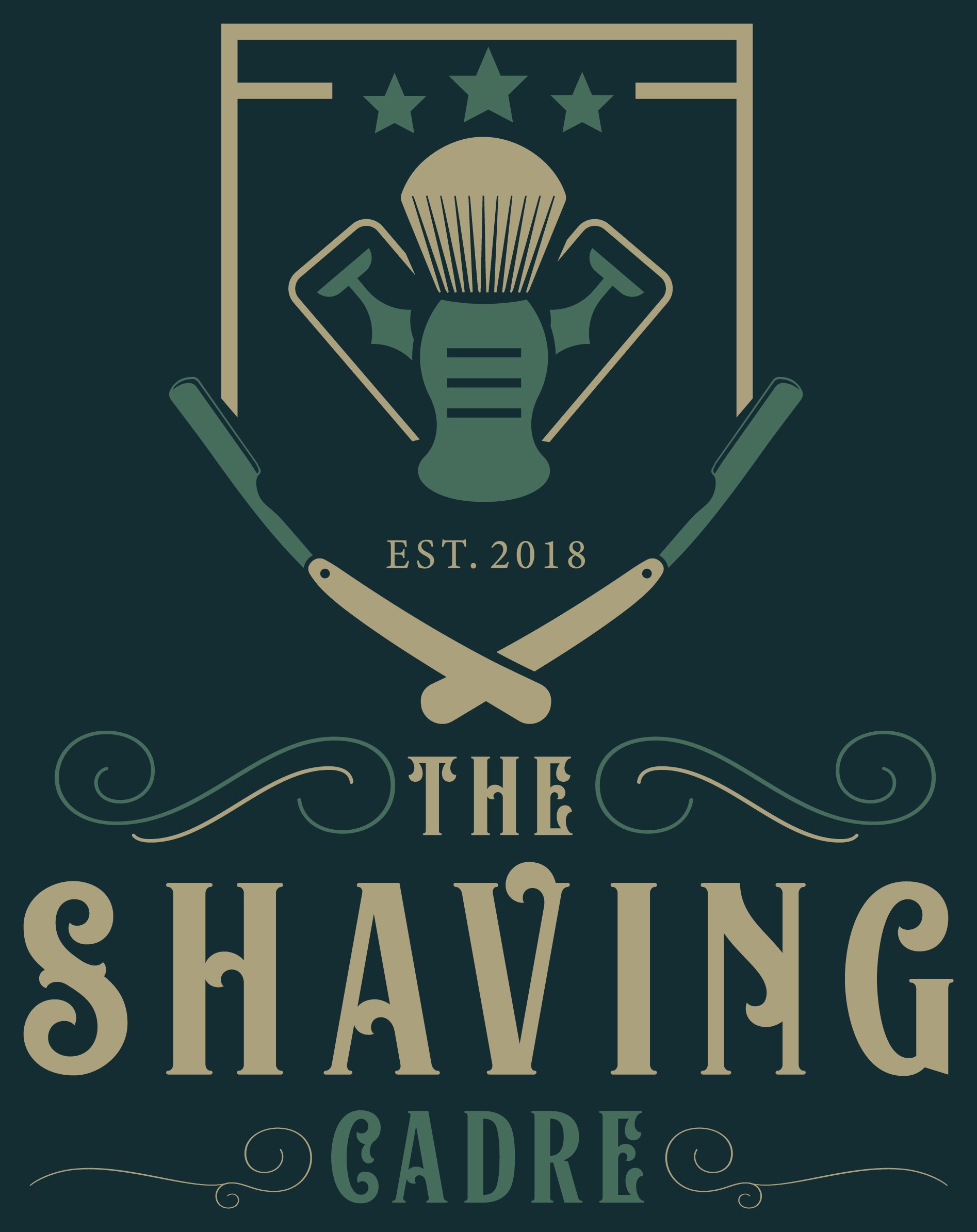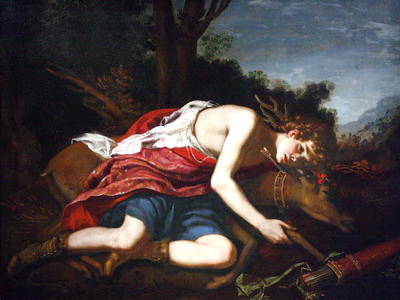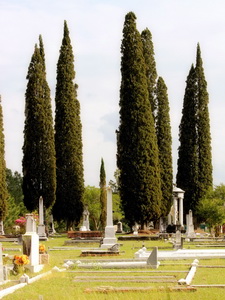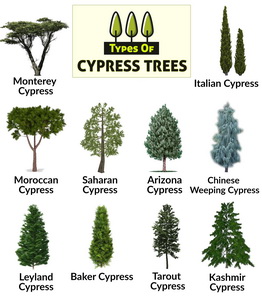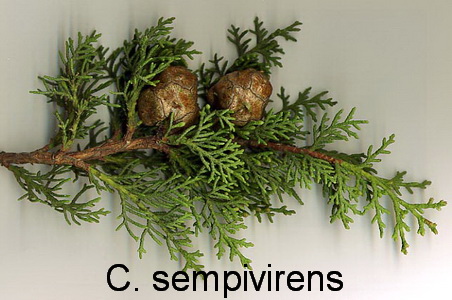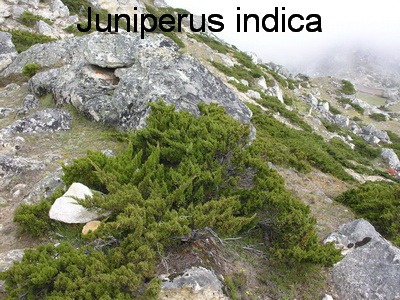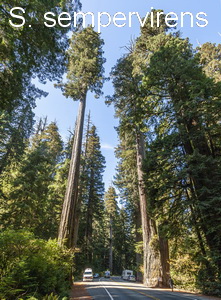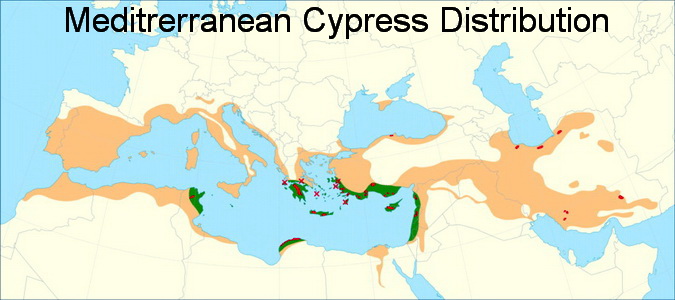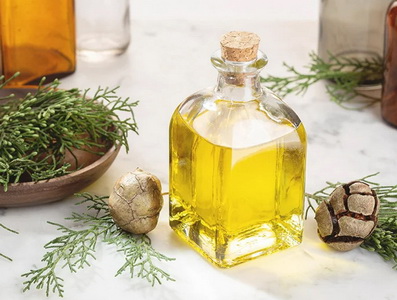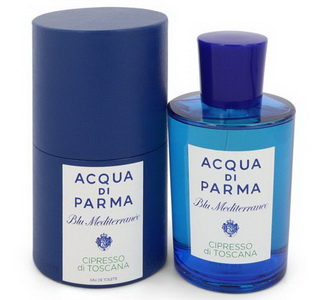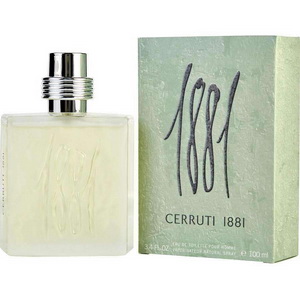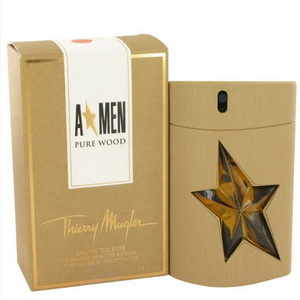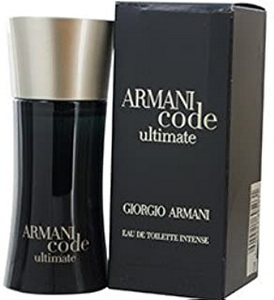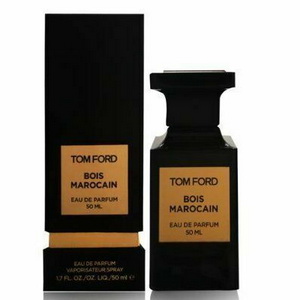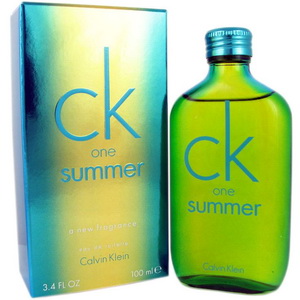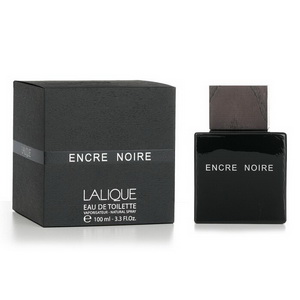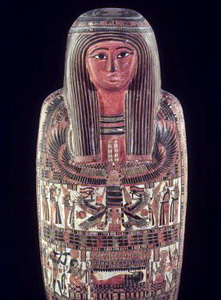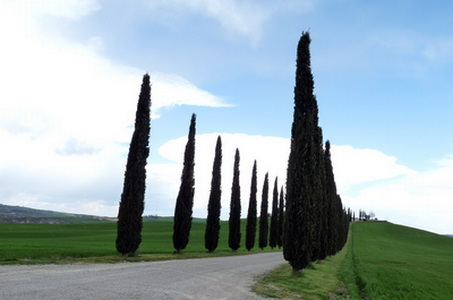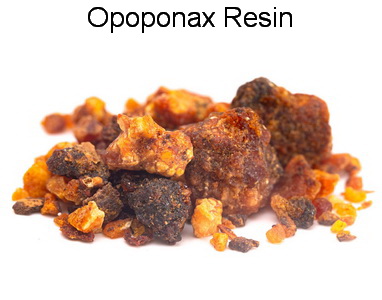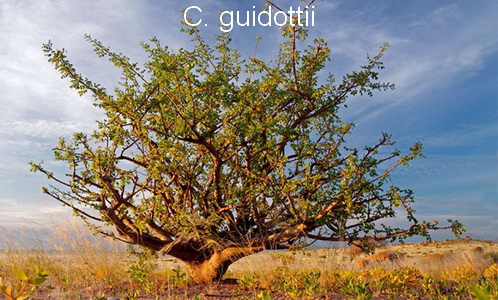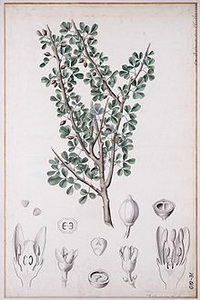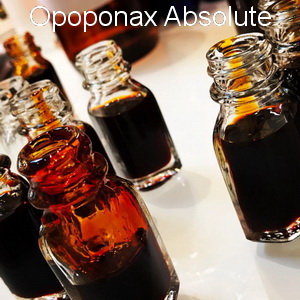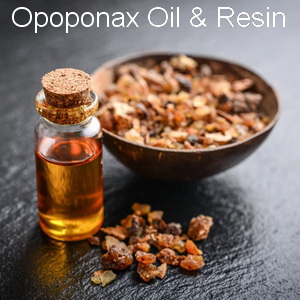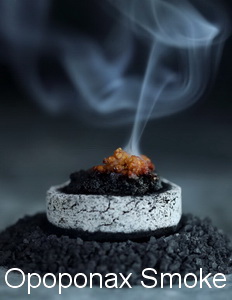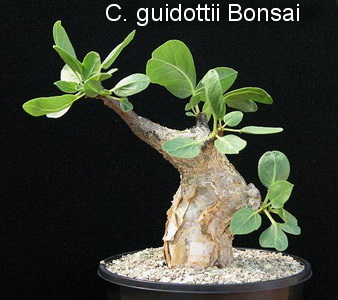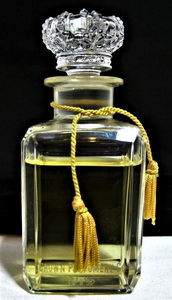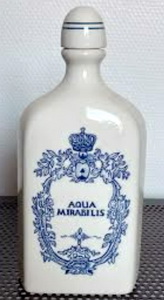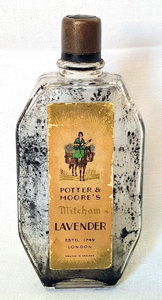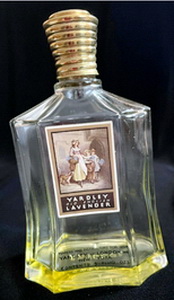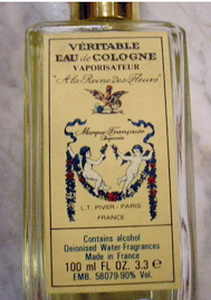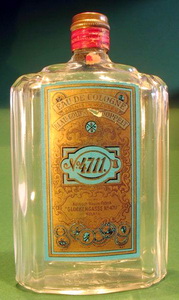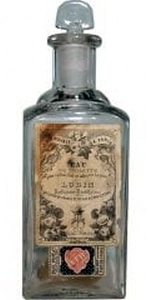churchilllafemme
TSC Yoda
Oakmoss/Lichens/Mosses
Oakmoss and others mosses and lichens have been used somewhat indiscriminately in perfumery under the name 'oakmoss,' and recent changes in their commercial use driven by health regulation have stimulated more precise research and methodology and have sharply divided opinions about them among perfume manufacturers and consumers.
Oakmoss
Evernia prunastri, known as oakmoss or 'mousse de chêne in French,' is a species of lichen. It can be found in many mountainous temperate forests throughout the Northern Hemisphere, including parts of France, Portugal, Spain, North America, much of Central Europe, and North Africa. Oakmoss grows primarily on the trunk and branches of oak trees, but is also commonly found on the bark of other deciduous trees and conifers such as fir and pine. The thalli (undifferentiated plant bodies lacking a vascular system) of oakmoss are 1-3 inches in length and bushy, and they grow together on bark to form large clumps. Oakmoss thalli are flat and strap-like and are palmately branched, ending in pointed tips resembling the form of deer antlers. The upper surface is warty with pale gray reproductive bodies (soredia); the undersurface is lighter, with a faint netlike pattern. The color of oakmoss ranges from green to a greenish-white when dry and dark olive-green to yellow-green when wet. The texture of the thalli is rough when dry and rubbery when wet.
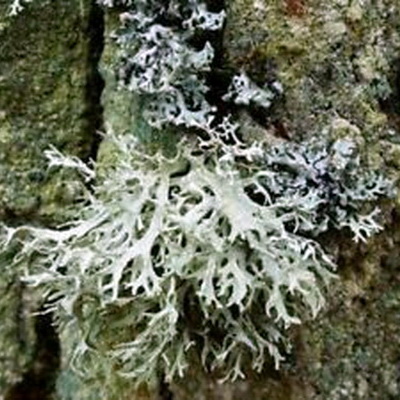
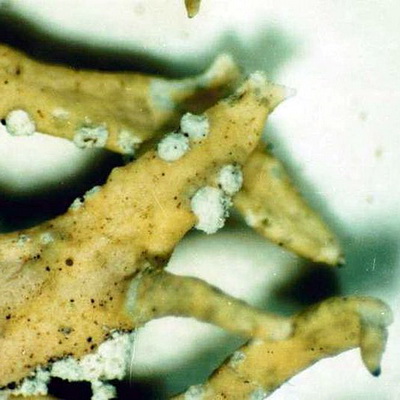
Oakmoss is commercially harvested in countries of South-Central Europe, especially in the Balkans, and usually is exported to the Grasse region of France, where its fragrant compounds are extracted as oakmoss absolutes and extracts. It is often used as an excellent, tenacious perfume fixative, leaving the scent profiles of other constituents in the fragrance relatively unmodified, much like civet does. The scent of oakmoss forms a solid base note of many fragrances and is a key component of most fougère and chypre perfumes and some vintage vetiver formulations. It has a distinct and complex odor that can be described as woody, sharp, damp, earthy, deep, dark, slightly saline, and/or slightly sweet, depending on its concentration and its synergy with other elements in the perfume. It combines especially well with floral and green notes, and it is said to deepen and enrich the animalic component of fragrances due to a leather-like undertone that persists from the top note through the drydown. Oakmoss growing on pines has a slightly different turpentine-like odor that is valued in certain perfume compositions.
Oakmoss absolute used in perfumery is soluble in alcohol and partially soluble in fixed carrier oils. It is obtained by solvent extraction or vacuum distillation. The absolute type from solvent extraction is dark green or brown and has a stronger, natural, earthy-mossy scent with a slight leather undertone. Vacuum distillation produces a pale yellow or green one with a drier, earthy, bark-like character.
Oakmoss is among the ingredients most widely used by perfumers. An essential element of fragrances within the chypre family, especially in combination with bergamot, it ‘anchors’ the more volatile notes. Oakmoss is sensual, with hints of musk and amber; the other mosses and lichens share the same general odor profile. Since Roman times in Cyprus, it was blended with styrax, calamus, and labdanum in this type of perfume in a generally unstandardized way. In the Middle Ages and then the Renaissance, oakmoss and tragacanth began to be added, and the herb mixtures were used to create ‘pastilles’ for medicinal and religious burning. It has been used since the 16th century in Western European perfumery, and fragrance recipes from the 1770s list oakmoss as well as civet, ambergris, and musk. Francois Coty’s Chypre perfume further popularized this type of fragrance in 1917 and it variations and descendants thereafter.
Elements in oakmoss, especially atranol, chloroatranol, and methyl-beta-orcinol carboxylate, can cause contact allergic skin reactions on people with known skin sensitization, much like poison ivy does. Oakmoss has been 'blacklisted' since 2009-2010 by the International Fragrance Association (IFRA), a body that regulates the guidelines for safe usage of chemicals and essential oils in perfumes, and its use in perfumes is now highly restricted (to no more than 0.1% of combined mosses in compositions applied to the skin). Many scents consequently have been reformulated in recent years, with other chemicals such as patchouli or synthetic imitations substituted for oakmoss. Because IFRA's member manufacturers produce more than 90% of the world's fragrances, its rules effectively function as law for nearly all companies. Chemists who have worked since around 2001 to make synthetic oakmoss 'knockoffs.' One of them, Cyrill Rolland, managed to imitate synthetically the way the scent of oakmoss seems to evolve, first evoking wet timber with a slightly bitter undertone of seaweed, and then changing to a dry, woody aroma. To untutored noses the fake products smell like the genuine oakmoss; however, there have been many complaints among more discerning consumers about the reformulated products. One prominent perfume writer even pronounced the art of fragrances "officially dead." Since perfumery is a $2 billion industry in which even a microliter substituion of one component for another can make the difference between a failure and megaseller, the limitation of oakmoss use has had a huge impact. As Guerlain’s in-house perfumer Thierry Wasser explained, whenever some part is removed from an ingredient, "it leaves a hole."
Some perfumers, including Arcadi Boix Camps, have tried using patchouli, vetiver, or a synthetic 'mossy woods' note instead of oakmoss, with varying success. One example is Comme des Garcons White. Wasser's initial answer was to substitute with celery seed in the famous Guerlain chypre Mitsouko and their Parure, but subsequently he has developed a processed raw oakmoss material to mimic it without the specific molecule not allowed by the guidelines. Says perfumer Clement Gavarry, "Some ingredients are there just to wrap things up. They might add performance or make a fragrance last longer. But ingredients like oakmoss are there to provide character or give a crucial twist to the fragrance." One fragrance writer, Denyse Beaulieu, has called the reformulated fragrance type an 'iFrag,' a pun on IFRA and fragrance and a reference to the iPod, whose music she describes as "skinny and fleshless," with a seemingly accurate surface but an empty inner substance. She complains, "People want a sound bite of a fragrance — something nice, clean, and fresh" that avoids taking risks. William Troy, IFRA North America's president from 2007 to 2010, acknowledges that some essential components are sacrificed. "And you know what? We can't do otherwise," he says. "If we can't demonstrate a safe use level, it's not in our best interest to allow that material to continue to be used in a product, because there are going to be problems — image problems as well as adverse consumer reactions." Some people have suggested allowing higher concentrations of mosses provided there is a prominent printed warning on the box, while others have presented a 'quenching' hypothesis, in which the anti-inflammatory azulene, which occurs natuarlly in chamomile, would be added. However, aluzene has its own odor profile and a blue color that complicate this idea.
Recently there has been a more promising commercial answer to providing oakmoss scent: through the processes of gas chromatography-mass spectrometry analysis and fractionation – identifying and separating the different components of an individual ingredient by gradients during a phase transition, and removing the potential sensitizers – it’s possible to get a substance that can be tweaked at the molecular level so that it is much closer to original whole oakmoss in its scent qualities. The company Mane, manufacturer of an increasingly popular oakmoss facsimile, claims that its natural substitute, derived from analysis of the oakmoss absolute and with a molecular structure kept as a closely guarded secet, is nearly identical in scent to oakmoss while still able to pass the IFRA tests.
Tree Moss
Pseudevernia furfuracea, commonly known as tree moss, is a lichen (or lichenized moss) that grows on the bark of 'nutrient poor' trees such as birch, pine, and spruce. This species, often somewhat carelessly included under the same common name as its botanic cousin oakmoss but growing less widely, has had numerous commercial roles, including use in perfume, Egyptian embalming, and medicine. Another species, Usnea barbata, also is used quite often in perfumery.
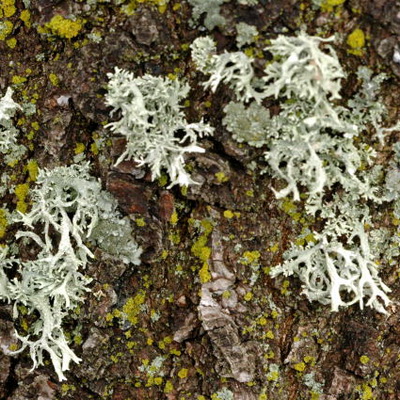
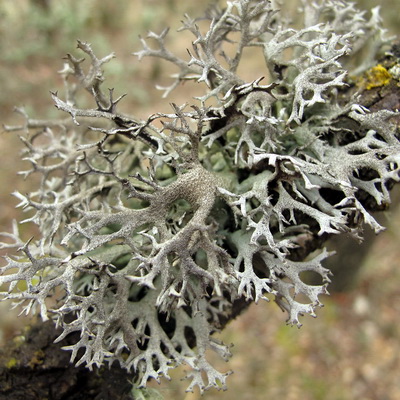
Large amounts of tree moss (sometimes called fir moss), like true oakmoss, are processed in Grasse, France for the perfume industry. Its fragrance is said to be generally one-dimensional, more astringent and less complex or nuanced, and less like a 'wet forest floor,' than oakmoss. This results in a relative lack of 'fullness,' for which some perfumers try to compensate by adding other ingredients such as patchouli. Tree moss has a turpentine smell before processing. In perfumes, oakmoss softens the tartness of citruses/aledhydes with which is is mixed, providing a powdery effect (especially in conjuction with orris root), which tree moss does not give. However, tree moss can add a desirable, persistent, dry background dimension that works well in contrasting moister and richer qualities such as those of rose and tobacco absolutes. In terms of fragrance classification, tree moss may be considered to have a position somewhere between leather and oakmoss. In perfumes it also works as a fixative basically the same way as oakmoss.
Benzene extraction, which has been banned for decades from manufacturing of perfumes, produced very high-quality lichen extracts, and attempts to use other similar solvents have been only partially successful. Currently either pure hexane or mixtures of hexane with acetates (or more rarely isopropanol) are used to removed the crude resinoids from tree mosses. The resinoids are then treated further with ethanol to produce absolutes. Traditionally these processes have been performed after desiccation of the lichen, since fragrance has been thought to develop significantly during storage. The qualitative scent composition of tree moss or lichen extracts can vary widely, depending on the exact method of preparation and on the presence of any residual or environmental contaminants.
Soluble extracts from P. furfuracea var. furfuracea and var. ceratea, as well as specific individual compounds found in them, have antimicrobial activity against a variety of microorganisms. In areas of Andalucia (Spain), P. furfuracea still is used for treating infections, especially respiratory complaints. The thallus is washed and boiled for a long time to prepare a decoction which is drunk for this purpose.
Water extracts of this species have been shown to have a potent protective effect on genotoxicity caused by bismuth compounds such as colloidal bismuth subcitrate, and it has been investigated for its ability to absorb toxic heavy metals from solution. The metal-binding biosorption for copper and nickel suggests it may have potential as a biosorbent for medical treatment of heavy metal toxicity. Because P. furfuracea tends to bioaccumulate heavy metals proportional to their concentration in airborne particulates, it can be used as a monitor of air quality, although it has been noted that element accumulation is partly dependent on the hydration level of the specimen. Also, the species is sensitive to ozone concentrations, and ozone fumigation results in impairment of its metal absorption, so it can reflect ambient ozone levels. P. furfuracea has also been used to monitor the levels of radionuclides, such as those of Cesium-137 in Austria after the Chernobyl nuclear accident.
In ancient Egyptian embalming, P. furfuracea was packed into the body cavity of mummies, although it is not certain whether this was done because of the supposed preservative properties or because of its aromatic properties.
Other Lichens
Other mosses and lichens have been used for centuries in folk medicine, including for treatment of mouth ulcers, cough, diarrhea, rabies, baldness, bleeding, fungal infections, and epilepsy, and they still are used commercially as natural deodorants.
They also have been used for dying cloth, candles, and other products. In medieval Europe, lichen dyes were dissolved in human urine, and clothing yarns were immersed in the mixture to color them, with ammonium salts in the urine acting as a mordant to make the dyes permanent. Northwest Pacific native American cultures used a lichen that grows on the bark of pines and firs to make a canary-yellow dye for porcupine quills that were woven into baskets, and Bryoria lichen was used by other Amerindians to give a brown or green color to shirts and leggings. A brown dye from the lichen Permelia omphalodes is still used in modern hand-woven Harris tweeds from the Outer Hebrides.
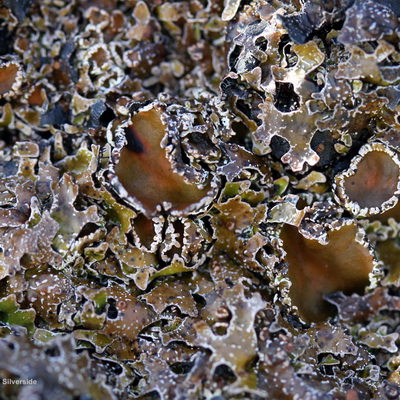
Certain toxic mosses have been used by Norwegians with baits to kill predatory wolves and protect their herd animal flocks, while digestible ones have provided flavoring for breads, beers (in place of hops), and salads, especially during times of famine.
'Oakmoss' as a perfume fragrance component is prominent in:
Abercrombie & Fitch 1892 Cobalt, Summer
Agua de Cheiro Saver Royal
Al Battash Concepts Ghala Zayed
Avon Wilderness, Windjammer
Azzaro Chrome Intense
Bloke Michael
Creed Aventus
Criminal Elements Ruben
Cuba Paris Green
Cuir de Russies (various)
Domenico Caraceni pour Homme
EastWest Bottlers Bluegrass
Faberlic Mon Roi
Frau Tonis Parfum No. 65 Eau de Berlin
Guerlain Mitsouko
Houbigant Fougère Royale
Jean Desses Gymkana
Jivago Red Gold
Joaquin Cortes Yekipe Pura Pasion
Juvena Lonestar
L'Artisan Parfumeur Riviera Palace
Le Prince Jardinier Arboretum
Loewe Esencia pour Homme
Luciano Soprani Uomo
LR/Racine Agent XY
Outremer Mousse de Chene-Oakmoss
Parfum Regence Oakmoss
Paris Elysees Dollar
Penhaligon Eucris
Pinaud Clubman
Pino Silvestre Muschi de Bosco
Ralph Lauren Safari
Scorpio Vertigo
Shirley May Don Carlos
Soyuzparfumerprom Diplomat
Thera Cosmeticos Zeus
Oakmoss and others mosses and lichens have been used somewhat indiscriminately in perfumery under the name 'oakmoss,' and recent changes in their commercial use driven by health regulation have stimulated more precise research and methodology and have sharply divided opinions about them among perfume manufacturers and consumers.
Oakmoss
Evernia prunastri, known as oakmoss or 'mousse de chêne in French,' is a species of lichen. It can be found in many mountainous temperate forests throughout the Northern Hemisphere, including parts of France, Portugal, Spain, North America, much of Central Europe, and North Africa. Oakmoss grows primarily on the trunk and branches of oak trees, but is also commonly found on the bark of other deciduous trees and conifers such as fir and pine. The thalli (undifferentiated plant bodies lacking a vascular system) of oakmoss are 1-3 inches in length and bushy, and they grow together on bark to form large clumps. Oakmoss thalli are flat and strap-like and are palmately branched, ending in pointed tips resembling the form of deer antlers. The upper surface is warty with pale gray reproductive bodies (soredia); the undersurface is lighter, with a faint netlike pattern. The color of oakmoss ranges from green to a greenish-white when dry and dark olive-green to yellow-green when wet. The texture of the thalli is rough when dry and rubbery when wet.


Oakmoss is commercially harvested in countries of South-Central Europe, especially in the Balkans, and usually is exported to the Grasse region of France, where its fragrant compounds are extracted as oakmoss absolutes and extracts. It is often used as an excellent, tenacious perfume fixative, leaving the scent profiles of other constituents in the fragrance relatively unmodified, much like civet does. The scent of oakmoss forms a solid base note of many fragrances and is a key component of most fougère and chypre perfumes and some vintage vetiver formulations. It has a distinct and complex odor that can be described as woody, sharp, damp, earthy, deep, dark, slightly saline, and/or slightly sweet, depending on its concentration and its synergy with other elements in the perfume. It combines especially well with floral and green notes, and it is said to deepen and enrich the animalic component of fragrances due to a leather-like undertone that persists from the top note through the drydown. Oakmoss growing on pines has a slightly different turpentine-like odor that is valued in certain perfume compositions.
Oakmoss absolute used in perfumery is soluble in alcohol and partially soluble in fixed carrier oils. It is obtained by solvent extraction or vacuum distillation. The absolute type from solvent extraction is dark green or brown and has a stronger, natural, earthy-mossy scent with a slight leather undertone. Vacuum distillation produces a pale yellow or green one with a drier, earthy, bark-like character.
Oakmoss is among the ingredients most widely used by perfumers. An essential element of fragrances within the chypre family, especially in combination with bergamot, it ‘anchors’ the more volatile notes. Oakmoss is sensual, with hints of musk and amber; the other mosses and lichens share the same general odor profile. Since Roman times in Cyprus, it was blended with styrax, calamus, and labdanum in this type of perfume in a generally unstandardized way. In the Middle Ages and then the Renaissance, oakmoss and tragacanth began to be added, and the herb mixtures were used to create ‘pastilles’ for medicinal and religious burning. It has been used since the 16th century in Western European perfumery, and fragrance recipes from the 1770s list oakmoss as well as civet, ambergris, and musk. Francois Coty’s Chypre perfume further popularized this type of fragrance in 1917 and it variations and descendants thereafter.
Elements in oakmoss, especially atranol, chloroatranol, and methyl-beta-orcinol carboxylate, can cause contact allergic skin reactions on people with known skin sensitization, much like poison ivy does. Oakmoss has been 'blacklisted' since 2009-2010 by the International Fragrance Association (IFRA), a body that regulates the guidelines for safe usage of chemicals and essential oils in perfumes, and its use in perfumes is now highly restricted (to no more than 0.1% of combined mosses in compositions applied to the skin). Many scents consequently have been reformulated in recent years, with other chemicals such as patchouli or synthetic imitations substituted for oakmoss. Because IFRA's member manufacturers produce more than 90% of the world's fragrances, its rules effectively function as law for nearly all companies. Chemists who have worked since around 2001 to make synthetic oakmoss 'knockoffs.' One of them, Cyrill Rolland, managed to imitate synthetically the way the scent of oakmoss seems to evolve, first evoking wet timber with a slightly bitter undertone of seaweed, and then changing to a dry, woody aroma. To untutored noses the fake products smell like the genuine oakmoss; however, there have been many complaints among more discerning consumers about the reformulated products. One prominent perfume writer even pronounced the art of fragrances "officially dead." Since perfumery is a $2 billion industry in which even a microliter substituion of one component for another can make the difference between a failure and megaseller, the limitation of oakmoss use has had a huge impact. As Guerlain’s in-house perfumer Thierry Wasser explained, whenever some part is removed from an ingredient, "it leaves a hole."
Some perfumers, including Arcadi Boix Camps, have tried using patchouli, vetiver, or a synthetic 'mossy woods' note instead of oakmoss, with varying success. One example is Comme des Garcons White. Wasser's initial answer was to substitute with celery seed in the famous Guerlain chypre Mitsouko and their Parure, but subsequently he has developed a processed raw oakmoss material to mimic it without the specific molecule not allowed by the guidelines. Says perfumer Clement Gavarry, "Some ingredients are there just to wrap things up. They might add performance or make a fragrance last longer. But ingredients like oakmoss are there to provide character or give a crucial twist to the fragrance." One fragrance writer, Denyse Beaulieu, has called the reformulated fragrance type an 'iFrag,' a pun on IFRA and fragrance and a reference to the iPod, whose music she describes as "skinny and fleshless," with a seemingly accurate surface but an empty inner substance. She complains, "People want a sound bite of a fragrance — something nice, clean, and fresh" that avoids taking risks. William Troy, IFRA North America's president from 2007 to 2010, acknowledges that some essential components are sacrificed. "And you know what? We can't do otherwise," he says. "If we can't demonstrate a safe use level, it's not in our best interest to allow that material to continue to be used in a product, because there are going to be problems — image problems as well as adverse consumer reactions." Some people have suggested allowing higher concentrations of mosses provided there is a prominent printed warning on the box, while others have presented a 'quenching' hypothesis, in which the anti-inflammatory azulene, which occurs natuarlly in chamomile, would be added. However, aluzene has its own odor profile and a blue color that complicate this idea.
Recently there has been a more promising commercial answer to providing oakmoss scent: through the processes of gas chromatography-mass spectrometry analysis and fractionation – identifying and separating the different components of an individual ingredient by gradients during a phase transition, and removing the potential sensitizers – it’s possible to get a substance that can be tweaked at the molecular level so that it is much closer to original whole oakmoss in its scent qualities. The company Mane, manufacturer of an increasingly popular oakmoss facsimile, claims that its natural substitute, derived from analysis of the oakmoss absolute and with a molecular structure kept as a closely guarded secet, is nearly identical in scent to oakmoss while still able to pass the IFRA tests.
Tree Moss
Pseudevernia furfuracea, commonly known as tree moss, is a lichen (or lichenized moss) that grows on the bark of 'nutrient poor' trees such as birch, pine, and spruce. This species, often somewhat carelessly included under the same common name as its botanic cousin oakmoss but growing less widely, has had numerous commercial roles, including use in perfume, Egyptian embalming, and medicine. Another species, Usnea barbata, also is used quite often in perfumery.


Large amounts of tree moss (sometimes called fir moss), like true oakmoss, are processed in Grasse, France for the perfume industry. Its fragrance is said to be generally one-dimensional, more astringent and less complex or nuanced, and less like a 'wet forest floor,' than oakmoss. This results in a relative lack of 'fullness,' for which some perfumers try to compensate by adding other ingredients such as patchouli. Tree moss has a turpentine smell before processing. In perfumes, oakmoss softens the tartness of citruses/aledhydes with which is is mixed, providing a powdery effect (especially in conjuction with orris root), which tree moss does not give. However, tree moss can add a desirable, persistent, dry background dimension that works well in contrasting moister and richer qualities such as those of rose and tobacco absolutes. In terms of fragrance classification, tree moss may be considered to have a position somewhere between leather and oakmoss. In perfumes it also works as a fixative basically the same way as oakmoss.
Benzene extraction, which has been banned for decades from manufacturing of perfumes, produced very high-quality lichen extracts, and attempts to use other similar solvents have been only partially successful. Currently either pure hexane or mixtures of hexane with acetates (or more rarely isopropanol) are used to removed the crude resinoids from tree mosses. The resinoids are then treated further with ethanol to produce absolutes. Traditionally these processes have been performed after desiccation of the lichen, since fragrance has been thought to develop significantly during storage. The qualitative scent composition of tree moss or lichen extracts can vary widely, depending on the exact method of preparation and on the presence of any residual or environmental contaminants.
Soluble extracts from P. furfuracea var. furfuracea and var. ceratea, as well as specific individual compounds found in them, have antimicrobial activity against a variety of microorganisms. In areas of Andalucia (Spain), P. furfuracea still is used for treating infections, especially respiratory complaints. The thallus is washed and boiled for a long time to prepare a decoction which is drunk for this purpose.
Water extracts of this species have been shown to have a potent protective effect on genotoxicity caused by bismuth compounds such as colloidal bismuth subcitrate, and it has been investigated for its ability to absorb toxic heavy metals from solution. The metal-binding biosorption for copper and nickel suggests it may have potential as a biosorbent for medical treatment of heavy metal toxicity. Because P. furfuracea tends to bioaccumulate heavy metals proportional to their concentration in airborne particulates, it can be used as a monitor of air quality, although it has been noted that element accumulation is partly dependent on the hydration level of the specimen. Also, the species is sensitive to ozone concentrations, and ozone fumigation results in impairment of its metal absorption, so it can reflect ambient ozone levels. P. furfuracea has also been used to monitor the levels of radionuclides, such as those of Cesium-137 in Austria after the Chernobyl nuclear accident.
In ancient Egyptian embalming, P. furfuracea was packed into the body cavity of mummies, although it is not certain whether this was done because of the supposed preservative properties or because of its aromatic properties.
Other Lichens
Other mosses and lichens have been used for centuries in folk medicine, including for treatment of mouth ulcers, cough, diarrhea, rabies, baldness, bleeding, fungal infections, and epilepsy, and they still are used commercially as natural deodorants.
They also have been used for dying cloth, candles, and other products. In medieval Europe, lichen dyes were dissolved in human urine, and clothing yarns were immersed in the mixture to color them, with ammonium salts in the urine acting as a mordant to make the dyes permanent. Northwest Pacific native American cultures used a lichen that grows on the bark of pines and firs to make a canary-yellow dye for porcupine quills that were woven into baskets, and Bryoria lichen was used by other Amerindians to give a brown or green color to shirts and leggings. A brown dye from the lichen Permelia omphalodes is still used in modern hand-woven Harris tweeds from the Outer Hebrides.

Certain toxic mosses have been used by Norwegians with baits to kill predatory wolves and protect their herd animal flocks, while digestible ones have provided flavoring for breads, beers (in place of hops), and salads, especially during times of famine.
'Oakmoss' as a perfume fragrance component is prominent in:
Abercrombie & Fitch 1892 Cobalt, Summer
Agua de Cheiro Saver Royal
Al Battash Concepts Ghala Zayed
Avon Wilderness, Windjammer
Azzaro Chrome Intense
Bloke Michael
Creed Aventus
Criminal Elements Ruben
Cuba Paris Green
Cuir de Russies (various)
Domenico Caraceni pour Homme
EastWest Bottlers Bluegrass
Faberlic Mon Roi
Frau Tonis Parfum No. 65 Eau de Berlin
Guerlain Mitsouko
Houbigant Fougère Royale
Jean Desses Gymkana
Jivago Red Gold
Joaquin Cortes Yekipe Pura Pasion
Juvena Lonestar
L'Artisan Parfumeur Riviera Palace
Le Prince Jardinier Arboretum
Loewe Esencia pour Homme
Luciano Soprani Uomo
LR/Racine Agent XY
Outremer Mousse de Chene-Oakmoss
Parfum Regence Oakmoss
Paris Elysees Dollar
Penhaligon Eucris
Pinaud Clubman
Pino Silvestre Muschi de Bosco
Ralph Lauren Safari
Scorpio Vertigo
Shirley May Don Carlos
Soyuzparfumerprom Diplomat
Thera Cosmeticos Zeus
